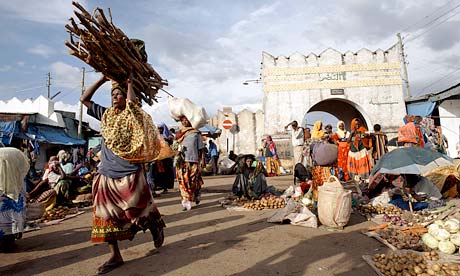
The Ethiopian government's absolute prime concern is ensuring food self-sufficiency at both national and household level. The first has already been attained and we are now working towards the second. Eighty-five per cent of Ethiopia's population of 80 million are smallholder farmers who, over the past 20 years, have benefited from agriculture extension packages that have vastly improved their productivity, to the extent that food production has risen exponentially; there are now even millionaire farmers. Surpluses are sold on Ethiopia's modern Commodity Exchange and are available for areas where there is a food deficit. As a result, far fewer people now rely on food supplements – 2.8 million, down from 5.2 million in the past year.
It is essential that, parallel to its activity of scaling up the productivity of small farmers, Ethiopia must develop large mechanised agriculture to increase food production and enable the agricultural sector the crucial role it is expected to play in the implementation of our five-year Growth and Transformation Plan. The government has put aside 3 million hectares (7.4 million acres) of land for this purpose of which, so far, 300,000 hectares have been leased to companies, both Ethiopian and foreign, so they can grow food crops for local sale and for export. Ethiopia has 76 million hectares of arable land in total so this potential 3 million hectares is a relatively small amount of the total. So commercial farming is supplementary to farming by small-holders.
Government experts have studied the land, the soil structure and the impact of mechanised farming. Environmental impact studies are carried out by our Environmental Protection Authority, headed by world-renowned ecologist Dr Tewolde Gebre Egziabher, and we lease out land – land is not sold but leased – according to what investors want to grow, matching the land to the crops. It is important to note that land allocated is not currently under cultivation by small-scale farmers and has, until now, been inaccessible for agricultural use, especially in the lowland areas. By the nature of the magnitude of these commercial farms the new social and physical infrastructure they bring is of great importance to the community and to the country as a whole.Continued

No comments:
Post a Comment